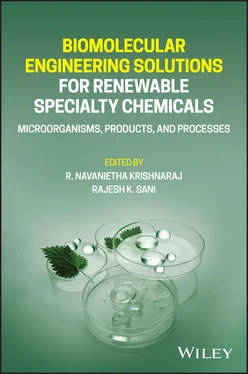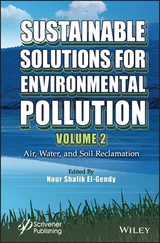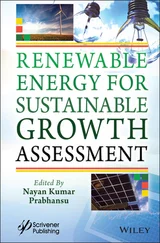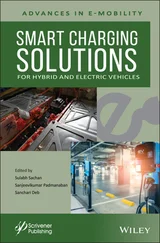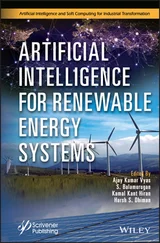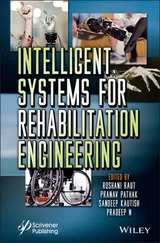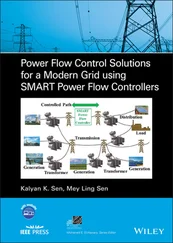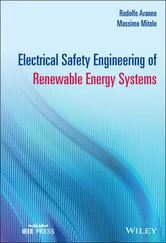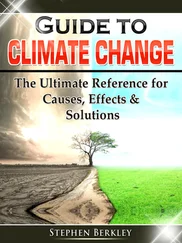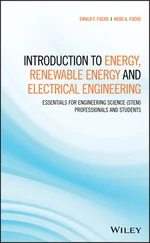1 Cover
2 Title Page
3 Copyright Page
4 PrefaceBiocommodity Engineering
5 List of Contributors
6 1 Engineered Microorganisms for Production of Biocommodities 1.1 Introduction 1.2 Fundamentals of Genetic Engineering 1.3 Beneficial Biocommodities Produced Through Engineered Microbial Factories 1.4 Photosynthetic Production of Biofuels 1.5 Conclusion References
7 2 Microbial Cell Factories for the Biosynthesis of Vanillin and Its Applications 2.1 Introduction 2.2 Natural Sources of Vanilla and Its Production 2.3 Biotechnological Production of Vanillin 2.4 Strain Development for Improved Production of Vanillin 2.5 Bioactive Properties of Vanillin 2.6 Conclusion Acknowledgments References
8 3 Antimicrobials 3.1 Introduction 3.2 Classification of Antibiotics 3.3 Antibacterial Agents 3.4 Antifungal Agents 3.5 Antiviral agents 3.6 Antiparasitic Agents 3.7 Antimicrobial Resistance 3.8 Conclusion Acknowledgment References
9 4 Trends in Antimicrobial Therapy 4.1 Introduction 4.2 Antibiotics: A Brief History 4.3 AMR: A Global Burden 4.4 Antimicrobial Resistance and Virulence 4.5 Alternatives to Antibiotics 4.6 Antibiotics: Global Action Plan on Antimicrobial Resistance 4.7 Conclusion Acknowledgment References
10 5 Fermentation Strategies in the Food and Beverage Industry 5.1 Introduction 5.2 Current Trends in Food Fermentation 5.3 Future Directions 5.4 Conclusions 5.5 Questions for Thought References
11 6 Bioactive Oligosaccharides 6.1 Introduction 6.2 Sources, Types, Structure of Oligosaccharides 6.3 Production Methods of Oligosaccharides 6.4 Extraction, Separation, and Purification of Oligosaccharides 6.5 Characterization of Oligosaccharides 6.6 Functional Properties of Oligosaccharides 6.7 Applications of Oligosaccharides 6.8 Market Potential of Oligosaccharides 6.9 Future Prospects References
12 7 Biopolymers 7.1 Introduction 7.2 Natures’ Advanced Materials: A Glance at Its Structure and Properties 7.3 Smart Biopolymers 7.4 Fundamental Applications of Biopolymers in Biomedical Engineering 7.5 Processing Techniques for the Contrivance of Biopolymers 7.6 Conclusion Acknowledgments References
13 8 Metabolic Engineering Strategies to Enhance Microbial Production of Biopolymers 8.1 Introduction 8.2 Microbes as Cell Factories for the Production of Speciality Biochemicals 8.3 Microbial Production Pathways for Various Types of Biopolymers 8.4 Tools and Technologies Available for Metabolic Engineering 8.5 Dynamic Metabolic Flux Analysis and its Role in Metabolic Engineering 8.6 Production of Biopolymers from Metabolically Engineered Microbes 8.7 Recovery and Purification of Biopolymers from Fermentation Broth 8.8 Conclusion and Future Challenges Acknowledgments References Web References
14 9 Bioplastics Production 9.1 Introduction 9.2 Current Trends 9.3 Different Types of Bioplastics 9.4 Challenges Facing the Bioplastics Industry 9.5 Misconceptions and Negative Impacts 9.6 Take Home Message and Future Directions 9.7 Questions for Thought Acknowledgments Conflict of Interest References
15 10 Conversion of Lignocellulosic Biomass to Ethanol 10.1 Introduction 10.2 LCB: Structure, Composition, and Recalcitrance 10.3 LCB to Ethanol: Bioprocess Strategies 10.4 Pretreatment of LCB 10.5 Enzymatic Hydrolysis 10.6 High Solids Loading Enzymatic Hydrolysis (HSLEH) 10.7 Fermentation 10.8 Genetic Engineering in LCB Bioconversion 10.9 Conclusions Acknowledgments References
16 11 Advancement in Biogas Technology for Sustainable Energy Production 11.1 Introduction 11.2 Biogas Developments Worldwide 11.3 Biogas Development in India 11.4 Recent Issues in Biogas Production 11.5 Current Trends in Biogas Production 11.6 Advanced Anaerobic Digestion Methodologies 11.7 Role of Biotechnology in Enhancing Biogas Production 11.8 Application of Nanotechnology in Biogas and Methane Production 11.9 Biogas Upgrading Technologies 11.10 Conclusion References
17 12 Biofertilizers 12.1 Introduction 12.2 Types of Biofertilizers 12.3 Effect on Bioremediation of Environmental Pollutants 12.4 Bioformulations and Its Types 12.5 Preparation of Biofertilizers 12.6 Various Modes of Biofertilizer Application 12.7 Challenges to Commercialization of Biofertilizers 12.8 Future Perspective References
18 13 Biofertilizers from Food and Agricultural By‐Products and Wastes 13.1 Introduction 13.2 Biofertilizer 13.3 Agricultural Waste 13.4 Food Waste 13.5 Biofertilizer Production Using Fermentation Technology 13.6 Biofertilizer for Organic Farming 13.7 Conclusion Conflict of Interest References
19 Index
20 End User License Agreement
1 Chapter 1 Table 1.1 Genome wide analysis of terpene synthase genes. Table 1.2 Photoautotrophic production of farnesene.
2 Chapter 2 Table 2.1 List of microorganisms capable of producing vanillin from various... Table 2.2 Amount of ferulic acid in different known natural sources. Table 2.3 Genetically modified (GM) microorganisms for synthesis of biovani...
3 Chapter 3 Table 3.1 Some bacteriostatic and bactericidal antibiotics. Table 3.2 Examples of broad‐ and narrow‐spectrum antibiotics. Table 3.3 Overview of antibacterial agents.Table 3.4 Overview of antifungal drugs.Table 3.5 Antiviral drugs and their respective clinical uses with mechanism...Table 3.6 Overview of antiparasitic drugs.
4 Chapter 4Table 4.1 Mechanism action of antibiotics.Table 4.2 Prioritized antibiotic resistance bacteria.
5 Chapter 5Table 5.1 The various fermented products produced by yeast, bacteria, and m...
6 Chapter 6Table 6.1 Extraction methods for oligosaccharides.Table 6.2 Methods for the purification of oligosaccharides.
7 Chapter 8Table 8.1 Computational and experimental tools available for metabolic engi...
8 Chapter 9Table 9.1 Countries with enacted plastic bag legislations.
9 Chapter 10Table 10.1 Composition of crop residues and energy crops.Table 10.2 Comparison of pretreatment of LCB by different methods.Table 10.3 Improvement of saccharification yield using enzyme cocktail mixt...Table 10.4 Ethanol production from lignocellulosic biomass at HSLEH and fer...
10 Chapter 11Table 11.1 Biogas upgrading technologies.
11 Chapter 13Table 13.1 Elemental compositions of possible waste biomass fertilizers.Table 13.2 Agro‐industrial wastes and their compositions.Table 13.3 Recent studies in the area of solid‐state fermentation using var...Table 13.4 Enzyme production using food waste via solid‐state fermentation ...
1 Chapter 1 Figure 1.1 Basic steps of gene cloning. Figure 1.2 Representative chemical structures of biopolymers. Figure 1.3 Different organic acids with their structures. Figure 1.4 Biosynthetic pathway for production of organic acids.
2 Chapter 2 Figure 2.1 World map showing the leading countries in the production of vani... Figure 2.2 Biotransformation pathways of vanillin in microbes using various ...
3 Chapter 3 Figure 3.1 (a) Basic structure of penicillin; (b) structures of i. natural p...Figure 3.2 Chemical structures of antibiotics. (a) Cephalexin; (b) i. Erythr...Figure 3.3 Mechanism of actions of antibacterial agents.Figure 3.4 (a) Chemical structure of Amphotericin B; (b) i. fluconazole, ii....Figure 3.5 Mechanisms of action of antifungal agents.Figure 3.6 Strategies of antibiotic resistance in bacteria.
4 Chapter 4Figure 4.1 Evolution of antibiotics.Figure 4.2 Schematic diagram of mechanism action of antibiotics.Figure 4.3 Mechanism action of antibiotic resistance in bacteria.Figure 4.4 Life cycle of Bdellovibrio .
5 Chapter 5Figure 5.1 Market share of different countries in the food and beverage indu...Figure 5.2 Biochemical pathways for transformation of fats (blue arrows), ca...
6 Chapter 6Figure 6.1 Sources of bioactive oligosaccharides with examples.Figure 6.2 (a–i) Structures of different oligosaccharides (a) Malto‐oligosac ...Figure 6.3 Application areas of bioactive oligosaccharides.
Читать дальше
